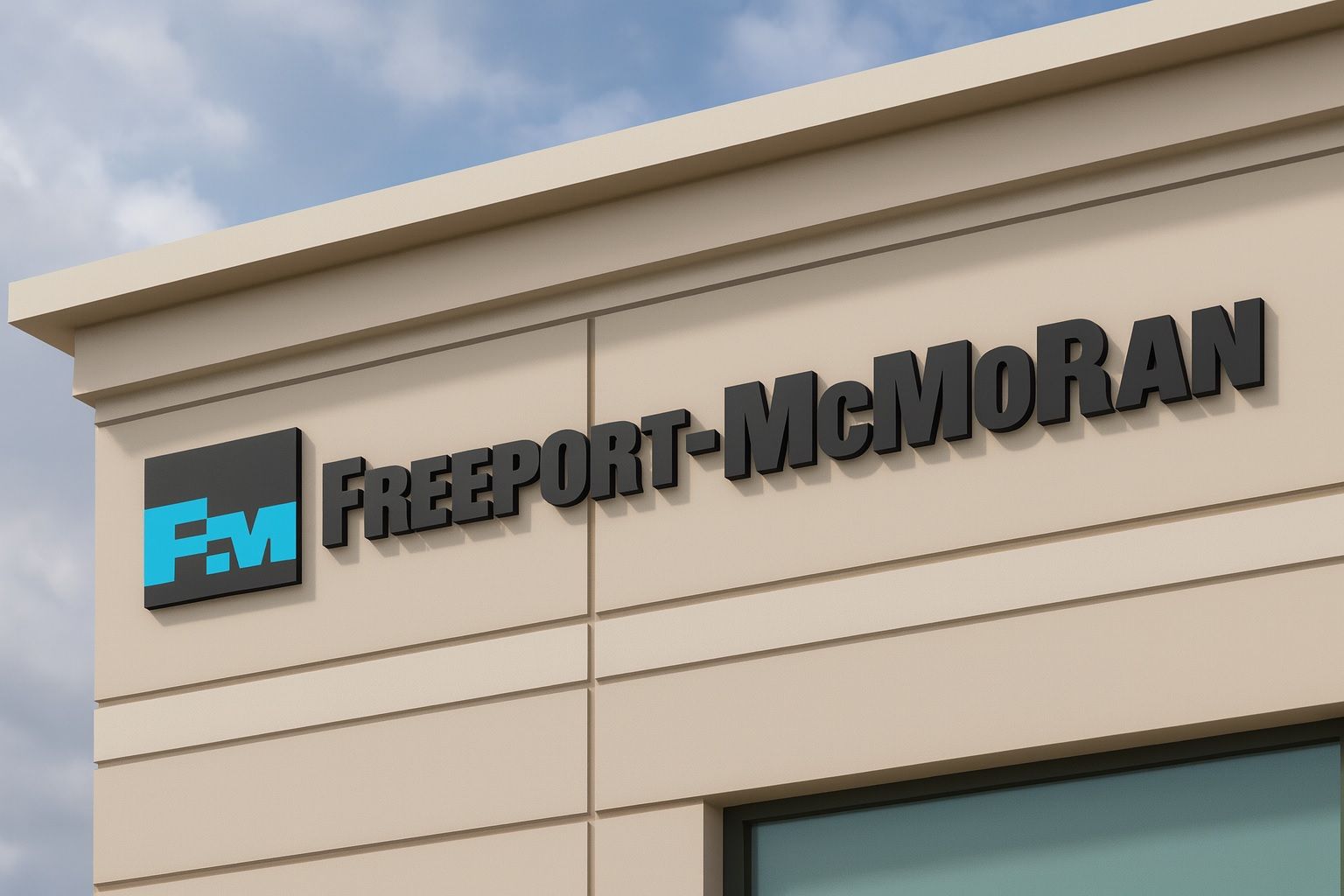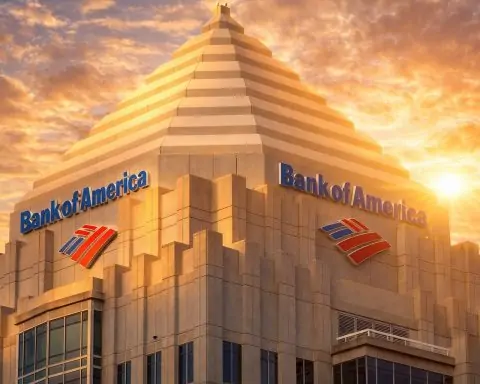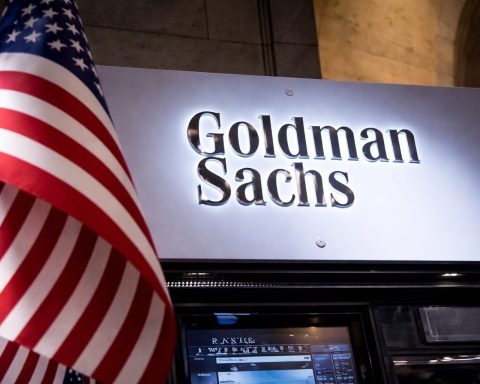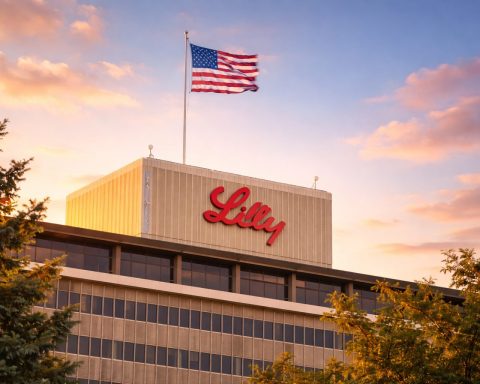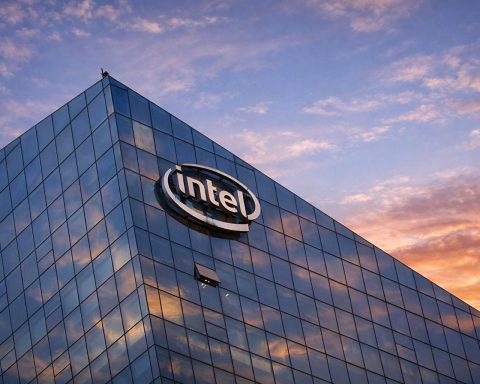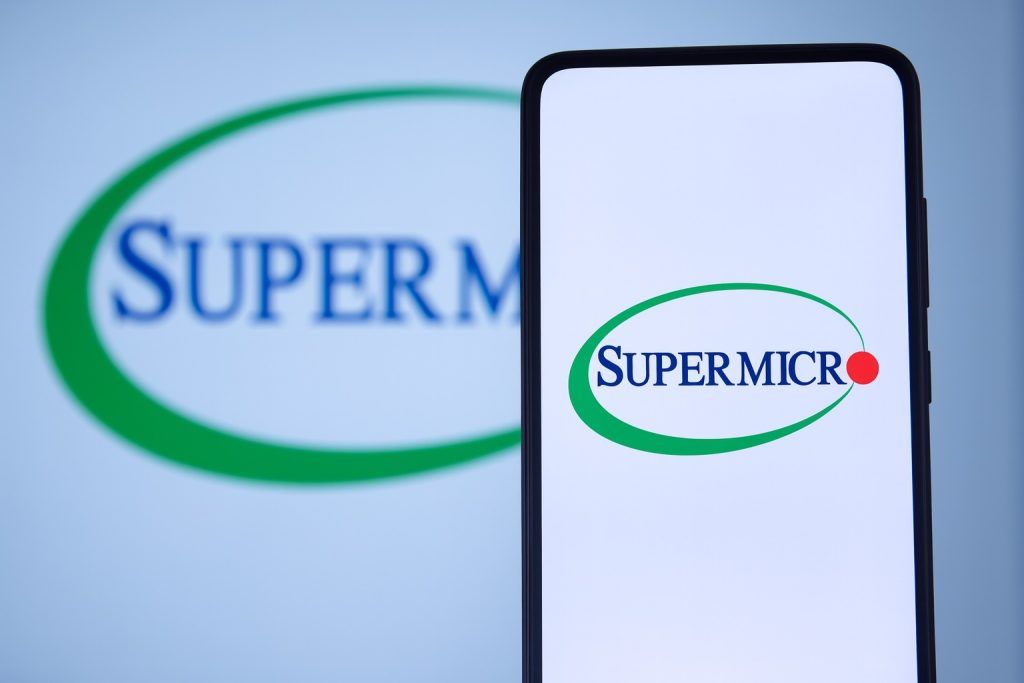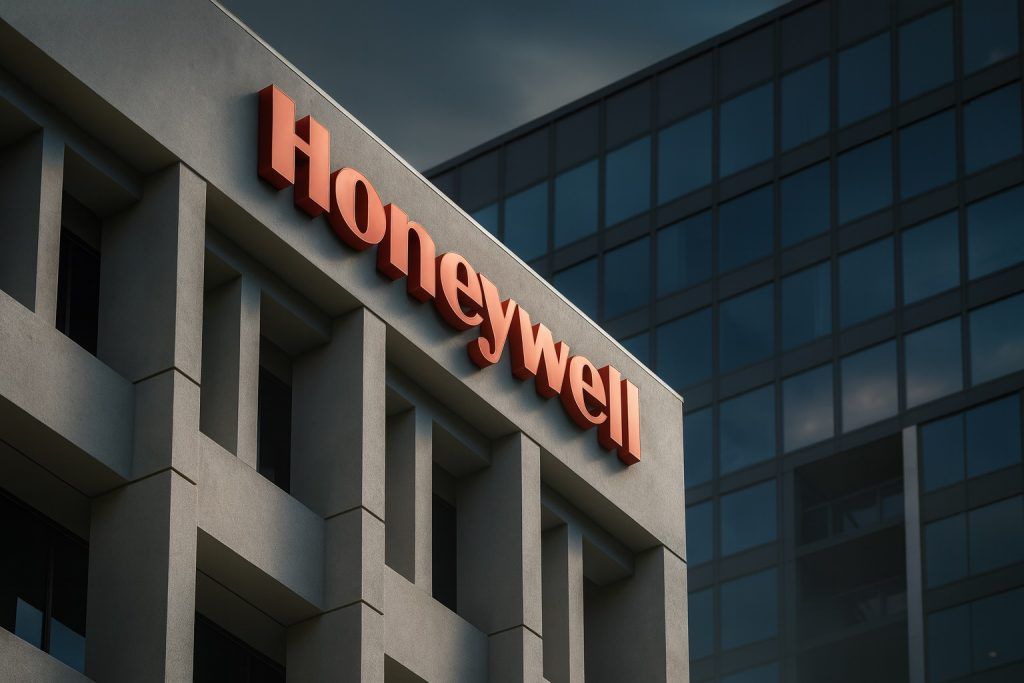- Earnings Surprise: Freeport-McMoRan (NYSE: FCX) delivered stronger-than-expected third-quarter profits, reporting an adjusted $0.50 per share vs. $0.41 anticipated [1]. Higher copper prices offset production declines, lifting shares ~3.3% in pre-market trading [2]. Year-to-date, the stock is up about 7% [3].
- Mine Tragedy Hits Output: Operations at Freeport’s giant Grasberg copper-and-gold mine in Indonesia were halted after a Sept. 8 underground mudflow killed seven workers [4]. The shutdown slashed Q3 copper output 13% and gold output 37% year-on-year [5]. Freeport warns Q4 copper sales will sink to ~635 million lbs (from 810 million lbs a year ago) and gold to 60,000 oz (from 527,000 oz), reflecting the ongoing suspension [6].
- Copper Prices Rally: Copper prices hit multi-month highs as Grasberg’s disruption tightened supply [7]. Shanghai copper reached a 6-month peak in September after Freeport declared force majeure on deliveries [8]. Average realized copper price in Q3 was $4.68/lb, up ~9% year-on-year amid improving Chinese demand and new infrastructure projects [9]. Gold has also been climbing in recent weeks on safe-haven flows, benefiting Freeport’s sizable gold output.
- Recovery Roadmap: Freeport plans a phased Grasberg restart by the first half of 2026 [10]. However, lost output is significant – the company estimates 2026 production could run 35% below prior forecasts, with full pre-incident production rates only returning by 2027 [11] [12]. Analysts note uncertainty remains on the mine’s timeline despite the stock’s initial selloff already pricing in much of the damage [13].
- Analyst & Investor Views: Wall Street remains cautiously optimistic. Twenty-four analysts rate Freeport a Buy or Strong Buy (vs. 5 Holds), with a consensus price target around $47 [14] – roughly 15% above current levels. Bulls highlight Freeport’s “valuable” copper assets across the Americas and eventual Grasberg recovery [15], while bears cite near-term earnings hits and geopolitical risks. Industry experts are divided: one CNBC analyst declared he’s “staying long” on Freeport amid the copper up-cycle [16], yet others urge caution until Indonesian operations normalize.
Strong Earnings Boost Shares Despite Output Drop
Freeport-McMoRan’s third-quarter 2025 results provided a jolt of good news for investors, even as the company copes with a major operational setback. The Phoenix-based copper and gold producer beat Wall Street expectations, posting an adjusted profit of $0.50 per share, handily above the $0.41 analyst consensus [17]. Revenue also exceeded forecasts, buoyed by robust copper prices. Higher copper price realizations – averaging $4.68/lb in Q3, about 9% higher than a year ago – helped cushion the blow from lower output [18]. Freeport’s copper production fell to 912 million lbs for the quarter (down 13% year-on-year) and gold output to 287,000 ounces (down 37%) due to the Indonesia stoppage [19].
Investors cheered the earnings surprise. FCX shares jumped over 3% in pre-market trading on Oct. 23 after results came out, and the stock has now gained roughly 7% in 2025 [20]. This resilience comes despite a steep drop a few weeks earlier: Freeport’s stock plunged nearly 17% on September 24 when the full impact of the Grasberg mine incident became clear [21]. The better-than-feared Q3 earnings suggest that soaring copper prices and strong performance at Freeport’s other mines are helping offset Grasberg’s losses. Freeport’s geographically diverse portfolio – including large operations in Arizona (Morenci) and Peru (Cerro Verde) – provides stability while Grasberg is offline [22]. These other assets enabled Freeport to keep shipments and cash flow flowing in Q3, and the company maintained its regular dividend of $0.15 (1.5% yield) to shareholders [23].
Company executives struck a determined tone. “We are grieving for our coworkers lost in this tragic incident,” said CEO Kathleen Quirk, “but remain committed to investigating the cause and resuming safe operations” [24] [25]. Management noted that phased ramp-up of Grasberg’s underground mine is likely only in early 2026, with little contribution in the current quarter [26]. In the meantime, Freeport is leaning on its North and South American mines and a firm copper market. The copper demand outlook appears favorable, with China’s government pledging to stabilize industrial growth – a factor that lifted prices in Q3 [27]. As a result, Freeport’s adjusted earnings actually grew versus a year ago, a remarkable feat under the circumstances. This has bolstered the bull case that the company can “ride out” the Indonesian disruption without lasting damage to its finances.
Grasberg Mine Disaster Halts Production and Triggers Outlook Cuts
Freeport’s upbeat earnings were overshadowed by the gravity of the situation at Grasberg – one of the world’s largest copper and gold mines. On September 8, a catastrophic mudflow inundated the Grasberg Block Cave underground mine, trapping seven workers. Despite frantic efforts, all seven were later found dead [28], prompting an outpouring of grief within the company and industry. Freeport suspended all mining at the Grasberg complex as of Sept. 8 to prioritize the search and safety investigation [29]. The disaster struck with “approximately 800,000 metric tons of wet material” flooding into mine passageways [30] – an unprecedented event in Freeport’s decades of operations at Grasberg.
The human tragedy has been compounded by a significant loss of production. Grasberg is Freeport’s crown jewel, accounting for about 4% of global copper supply and 70% of Freeport Indonesia’s projected output through 2029 [31] [32]. With the mine idle, Freeport’s Q3 sales came in 4% below prior copper volume guidance and 6% lower on gold [33]. Looking ahead, Freeport slashed its forecasts: fourth-quarter 2025 copper sales will be negligible (previously 445 million lbs) and gold sales “insignificant” (versus 345,000 oz planned) [34]. The company warned that “significant production” will be deferred from late 2025 into 2026, with internal estimates that 2026 output may run ~35% below pre-incident plans [35]. Full restoration of mining rates may not occur until 2027 under current projections [36] [37].
This outlook revision sent shockwaves through the market. On Sept. 24, Freeport formally declared force majeure on certain Grasberg supply contracts and outlined the bleak production scenario, precipitating a sharp selloff in FCX shares [38] [39]. Analysts at RBC Capital noted the ~17% share price drop matched the roughly 19% cut to Freeport’s 2026 EBITDA forecast from the incident, suggesting the bad news was largely priced in [40]. “Uncertainty remains regarding the future direction of operations at Grasberg,” the RBC analysts cautioned, even as they acknowledged that the downside risk might now be largely reflected in the stock [41]. Similarly, UBS cut its price target to $42.50 (Neutral rating) after the disaster, citing unknowns about the investigation and repair timeline [42].
Freeport is working around the clock to address those unknowns. The company assembled a team of external experts to investigate the accident’s root cause and is closely coordinating with Indonesian authorities on a recovery plan [43]. Preliminary examinations suggest the incident damaged infrastructure not just in the immediate collapse area but also in adjacent production zones within the mine [44]. Repairing tunnels, rail lines, and ore chutes will take time, and only the unaffected sections of the mine (Big Gossan and Deep MLZ) might reopen by mid-Q4 2025 [45]. A cautious schedule foresees some output resuming in H1 2026 across three mining blocks, with the hardest-hit block restarting by 2027 [46]. Freeport has $1 billion in insurance coverage for property and business interruption (with a $0.5B deductible) and is pursuing claims to offset losses [47]. In the interim, the company has declared force majeure to customers and will ration existing concentrate stockpiles [48]. Industry observers note Grasberg’s troubles have tightened global copper supply – an already “stretched” supply chain – contributing to higher prices in LME markets [49] [50].
The Grasberg crisis also highlights geopolitical risks surrounding Freeport’s Indonesian operations. In early October, Freeport agreed to divest an additional 12% stake in its Indonesian subsidiary to the government at no cost, per local reports [51]. Indonesia’s state-owned mining firm MIND ID already held a majority 51% stake (acquired in 2018), and the extra 12% free transfer would deepen government ownership. This move, likely tied to contract extension negotiations, underscores Jakarta’s resolve to assert greater control – a dynamic that has long worried investors. Some feared the Grasberg incident might trigger even tougher terms or, in extreme bear cases, nationalization of the mine. However, Freeport CEO Richard Adkerson has reaffirmed the company’s commitment to Indonesia and expressed confidence that an equitable solution will be reached. Industry experts point out that Freeport’s partnership with the Indonesian government is strong, noting that the swift agreement on the divestment could actually reduce uncertainty by fulfilling mandated resource nationalism goals [52] [53]. “Everyone thinks Indonesia is going to expropriate the mine. I don’t think so – I think you’re fine in the stock,” commentator Jim Cramer recently told investors, downplaying worst-case scenarios [54].
Copper & Gold Markets Bolster the Bull Case
Freeport’s fortunes are closely tied to global copper and gold trends, and recent market developments have been favorable. Copper is in the midst of a mini-rally, with benchmark prices climbing on both supply and demand factors. On the demand side, China – which consumes half the world’s copper – has introduced stimulus measures and infrastructure projects. Beijing’s pledges to “stabilize industrial growth,” including a massive hydropower project in Tibet, have improved sentiment in the metals market [55]. Freeport noted “signs of better demand” in China supporting copper prices during Q3 [56]. On the supply side, the Grasberg outage and other mine disruptions have squeezed availability. After Freeport’s force majeure news, Shanghai copper futures hit their highest level in six months as traders priced in a tighter raw material supply outlook [57]. London copper similarly spiked to a 15-month peak (~$10,485/ton) in late September [58]. Investment bank Goldman Sachs quickly widened its projected 2026 copper deficit from 72,000 tons to 400,000 tons due to the Grasberg shortfall, and said prices may need to rise toward $10,000/ton to stimulate new supply [59]. This copper upswing directly benefits Freeport-McMoRan: each uptick in copper price boosts the company’s revenue and margins on every pound produced, partially offsetting the volume loss from Indonesia.
Gold, meanwhile, has surged to near-record territory this fall amid global uncertainty. Freeport is one of America’s largest gold miners (thanks to Grasberg’s rich gold reserves), so the timing of gold’s rally is a silver lining. Spot gold recently broke above $2,000/oz, and some analysts see further upside as geopolitical tensions (from Eastern Europe to the Middle East) and inflation fears drive investors into safe havens. Notably, Jim Cramer of CNBC highlighted Freeport’s gold exposure, saying that if management “talk a good game” on the earnings call, the “awesome gold rally” could have another leg higher [60]. In other words, positive guidance or reassurance from Freeport’s leadership might amplify bullion investors’ optimism.
With copper and gold both strengthening, Freeport’s commodity leverage is on full display. The company achieved record operating cash flows in Q3 thanks in part to the copper price jumping to ~$4.70/lb [61]. This is a dramatic turnaround from a year ago when recession worries and a strong U.S. dollar kept copper closer to $4.00. Freeport’s CEO noted that every 10-cent change in copper price equates to roughly $275 million in annual EBITDA for the firm – illustrating how rising prices can swiftly fatten profits. Freeport also enjoys a unique position as a major U.S. copper producer at a time when the U.S. government is interested in securing domestic critical minerals. There has even been talk of copper trade measures: for instance, the possibility of U.S. tariffs on imported copper to incentivize local output [62]. Freeport, which controls an estimated 60% of U.S. copper production, would stand to benefit from any such protectionist moves [63]. While no specific tariff has been confirmed, the mere speculation reflects copper’s strategic importance and adds another layer to Freeport’s long-term bull case.
Finally, the clean energy boom provides a secular demand driver for copper. Electric vehicles, renewable energy systems, and grid expansion are all copper-intensive, and many analysts see a structural copper supply deficit emerging later this decade. Freeport, as one of the world’s top publicly traded copper suppliers, is often cited as a prime beneficiary of this “green megatrend.” Some market strategists predict a copper supercycle, and note that Freeport’s stock tends to act as a barometer for copper’s outlook. Indeed, quantitative models are flagging Freeport as an attractive play: Nasdaq’s guru-based Twin Momentum screen recently gave FCX a 94% score – signaling strong fundamental and price momentum for the stock [64]. This reflects the positive trajectory of Freeport’s earnings and stock performance relative to peers, fueled by robust metal markets. In short, macro tailwinds from copper and gold are helping underpin investor confidence in Freeport even as it navigates short-term challenges.
Wall Street Analysis: Balancing Near-Term Risks and Long-Term Potential
Financial analysts have been actively updating their views on Freeport-McMoRan in light of the Grasberg incident and evolving commodity landscape. The consensus on Wall Street is cautiously optimistic. According to MarketBeat data, Freeport carries a “Moderate Buy” consensus rating, with 4 Strong Buy, 15 Buy, and 5 Hold recommendations [65]. Price targets average around $46–$47 per share, implying double-digit upside from the current ~$41 share price [66]. However, there is a notable split between short-term caution and long-term bullishness in these assessments.
On the cautious side, several research houses downgraded or trimmed targets immediately after the Grasberg disaster. RBC Capital cut its target from $54 to $48 (Sector Perform) on October 1, explaining that while the sell-off likely priced in a lot of downside, “uncertainty remains” around Grasberg’s ramp-up and investigation results [67]. UBS likewise lowered its target to ~$42.50 and kept a Neutral stance [68]. These analysts are essentially in “wait-and-see” mode – acknowledging Freeport’s strong asset base but preferring more clarity on the Indonesia situation before turning more bullish. Credit concerns also surfaced: Bank of America downgraded Freeport’s bonds to Underweight in the wake of the incident, citing the temporary hit to cash flows [69]. Some observers have also pointed out that Freeport’s valuation is not cheap – the stock trades around 31 times earnings, a reflection of peak-cycle copper prices [70]. If metals prices were to pull back or if Grasberg’s outage drags on longer than expected, these skeptics warn Freeport’s earnings could be under pressure in 2024.
Conversely, the bull camp sees the recent dip as an opportunity. Numerous analysts maintain high targets and even upgraded their views after the initial shock passed. For example, Raymond James reaffirmed an Outperform rating while nudging its target to $46, arguing that Freeport’s “valuable copper and gold assets” and solid balance sheet position it to weather the storm [71]. Notably, Bernstein (SocGen) actually upgraded Freeport to Outperform in early October and set a ~$48.50 target, expressing confidence that production can recover by 2027 and that the stock offers attractive long-term value at current prices [72]. Bulls emphasize that Freeport’s core investment thesis – as a dominant player in a metal vital for the clean energy transition – remains intact. “This is a world-class mining franchise with decades of reserves,” one analyst told Reuters, “so a one- or two-year setback doesn’t change the long-term story.” They also note Freeport’s strong finances (over $8 billion in liquidity and manageable debt) and ongoing shareholder returns (the dividend and opportunistic stock buybacks) as signs of resilience [73] [74].
Investor sentiment on the stock seems to mirror this two-sided analysis. Some high-profile market voices have come out bullish. CNBC’s Steve Grasso recently named Freeport his top pick, saying “We talked about copper… I’m long it – I’m staying long” on the expectation of a continuing uptrend in copper demand [75]. Grasso even speculated that potential U.S. policy announcements (perhaps by Commerce officials) could further boost sentiment for domestic resource companies [76]. Likewise, Jim Cramer highlighted Freeport in his “Game Plan,” not only for the gold angle but because he believes management can navigate Indonesia’s challenges effectively [77] [78]. On the other hand, more value-oriented investors are taking a show-me stance – they acknowledge Freeport’s strengths but prefer to see Grasberg back on-line and cash flows normalizing. Until then, they argue the stock may trade range-bound. This balanced viewpoint was summed up by Zacks Research, which drastically cut its near-term earnings forecasts for Freeport (Q4 2025 EPS cut from $0.45 to $0.23) but still noted the company’s overall “Moderate Buy” rating and ~$47 target among covering analysts [79] [80]. In other words, short-term earnings will dip, but longer-term earnings power remains robust once operations recover.
Taking a broader perspective, Freeport-McMoRan appears to be at a crossroads. The next few quarters will likely be challenging – with depressed output from Indonesia and an imperative on management to execute repairs and maintain investor trust. Yet, the fundamentals of Freeport’s business and the copper market are arguably the best they’ve been in years. Freeport’s leadership insists the Grasberg incident, while tragic, is an isolated event and that the mine’s “multi-decade” potential is undiminished [81] [82]. If they are proven right, Freeport could emerge from 2026 with even more leverage to a copper-hungry world (having invested in safety improvements and new infrastructure during the hiatus).
For now, analysts advise watching a few key factors: progress on Grasberg’s restart milestones, any further policy moves in Indonesia (the government’s support will be crucial), and of course copper and gold price trajectories. Freeport’s stock will likely take its cues from these developments. The overall sentiment is guarded optimism. As one industry veteran quipped, “Freeport has been through many cycles and challenges – from collapses to nationalization scares – and they’ve always managed to come out the other side”. With the company’s underlying earnings still healthy and metal markets on its side, investors appear willing to bet that Freeport-McMoRan can do so once again [83] [84].
Sources: Freeport-McMoRan Q3 2025 earnings release [85] [86]; Reuters news reports [87] [88] [89]; Freeport press statements [90] [91]; Analyst commentary via MarketBeat/Investing [92] [93]; CNBC/Insider Monkey quotes [94] [95]; Nasdaq (Validea) market data [96].
References
1. www.reuters.com, 2. www.reuters.com, 3. www.reuters.com, 4. www.reuters.com, 5. www.reuters.com, 6. www.reuters.com, 7. www.reuters.com, 8. www.reuters.com, 9. www.reuters.com, 10. www.reuters.com, 11. investors.fcx.com, 12. investors.fcx.com, 13. www.investing.com, 14. www.marketbeat.com, 15. www.investing.com, 16. finviz.com, 17. www.reuters.com, 18. www.reuters.com, 19. www.reuters.com, 20. www.reuters.com, 21. www.investing.com, 22. investors.fcx.com, 23. www.marketbeat.com, 24. investors.fcx.com, 25. investors.fcx.com, 26. www.reuters.com, 27. www.reuters.com, 28. www.reuters.com, 29. investors.fcx.com, 30. investors.fcx.com, 31. www.reuters.com, 32. investors.fcx.com, 33. investors.fcx.com, 34. investors.fcx.com, 35. investors.fcx.com, 36. investors.fcx.com, 37. www.reuters.com, 38. www.investing.com, 39. investors.fcx.com, 40. www.investing.com, 41. www.investing.com, 42. www.investing.com, 43. investors.fcx.com, 44. investors.fcx.com, 45. investors.fcx.com, 46. investors.fcx.com, 47. investors.fcx.com, 48. investors.fcx.com, 49. www.reuters.com, 50. www.reuters.com, 51. www.investing.com, 52. www.insidermonkey.com, 53. www.investing.com, 54. www.insidermonkey.com, 55. www.reuters.com, 56. www.reuters.com, 57. www.reuters.com, 58. www.reuters.com, 59. www.reuters.com, 60. www.insidermonkey.com, 61. www.reuters.com, 62. finviz.com, 63. finviz.com, 64. ts2.tech, 65. www.marketbeat.com, 66. www.marketbeat.com, 67. www.investing.com, 68. www.investing.com, 69. www.investing.com, 70. www.marketbeat.com, 71. www.investing.com, 72. www.investing.com, 73. www.marketbeat.com, 74. www.marketbeat.com, 75. finviz.com, 76. finviz.com, 77. www.insidermonkey.com, 78. www.insidermonkey.com, 79. www.marketbeat.com, 80. www.marketbeat.com, 81. investors.fcx.com, 82. investors.fcx.com, 83. www.investing.com, 84. www.insidermonkey.com, 85. www.reuters.com, 86. www.reuters.com, 87. www.reuters.com, 88. www.reuters.com, 89. www.reuters.com, 90. investors.fcx.com, 91. investors.fcx.com, 92. www.investing.com, 93. www.investing.com, 94. finviz.com, 95. www.insidermonkey.com, 96. ts2.tech
